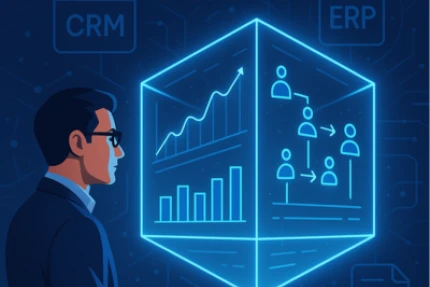
As software company valuations declined due to the rise in borrowing costs in 2022, and with the recent failure and sale of Silicon Valley Bank, B2B software companies have been under greater pressure. To remain resilient and adjust quickly, there has been a greater focus on monitoring key performance indicators. However, not all KPIs are created equal, and it is important to consider the many nuances when defining the metrics you want to track.
It is important to monitor a combination of top-of-the-funnel pipeline metrics, customer health metrics, and profitability metrics to ensure a healthy balance of growth and efficiency. Especially in the current environment, business leaders and investors want to see companies focusing on efficiency while driving sustainable growth.
10 Critical Important KPIs to Monitor
- ARR (ending vs. net new, growth rate)
- TTM Retention (net and gross)
- Total Bookings and Billings
- CAC Payback
- Billing EBITDA
- Gross Margin
- NPS
- Cash Burn Rate
- Rule of 40 (Revenue Growth Rate + EBITDA Margin)
- Revenue per Employee
Nuanced KPIs to Consider
However, many of these KPIs have nuances that vary depending on a company’s operating model. This lack of standardization for KPI calculations is a major reason why it is essential for companies to define their KPI formulas clearly. Below are some of the nuanced KPIs to consider when defining metric calculations:
Gross Retention Rate: Late Renewals
Unfortunately for software companies, many customers fail to renew on time. As a result, when calculating gross retention, companies should think about whether or not late renewals should be included.
It may be helpful to consider monitoring two different GRRs: bookings GRR and revenue GRR. Bookings GRR compares what is up for renewal in the period versus what was successfully renewed. Companies should calculate it on a regular basis whether monthly or quarterly. On the other hand, revenue GRR is generally a lagging metric, and compares prior year performance to current year performance.
CAC: Lagging GTM Spend
Customer acquisition cost (CAC) looks at the dollars spent on commercial efforts divided by the total number of customers acquired in a given period. While this sounds simple, depending on a company’s sales cycle length, that spend should be lagged by a certain period. If it takes about 90 days to close a customer, you should lag spend by a quarter. However, if your sales cycle length is typically 6 months, you should lag spend by two quarters.
A second consideration is segment. If different products, markets, or segments have very different sales cycles, and if you track budget spent by each of these efforts, you should think about breaking out CAC by segment. The more granular your CACs are, the more actionable the insights will be.
CAC Payback Months: New Logo v. Expansion
CAC Payback months is the time it takes to recoup the cost spend to acquire a new customer based on deal size. With this calculation, companies need to decide whether they want to include expansion deals in a general, all-in CAC payback calculation, or splitting CAC payback into new verses expansion metrics.
Revenues / Employees: Including Full-time Consultants
Revenues per employee is becoming a very important efficiency metric for management teams. However, for companies that have a large consultant base, you need to think about whether to include full-time consultants in this calculation. If you rely heavily on the work produced by the consultant, or if you are spending a significant portion of budget on your consultants, it may make sense to include them in the calculation. Calculate both Revenue per Employee as well as ARR per Employee.
Conclusion
In conclusion, regardless of how companies treat these nuanced KPIs, consistency is critical. It is crucial to define metrics with other stakeholders and track KPI performance regularly.



